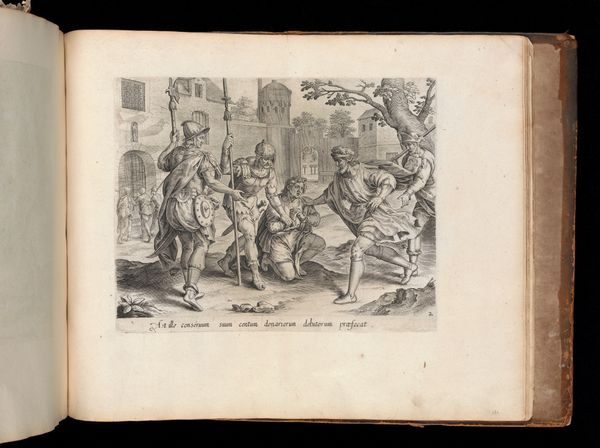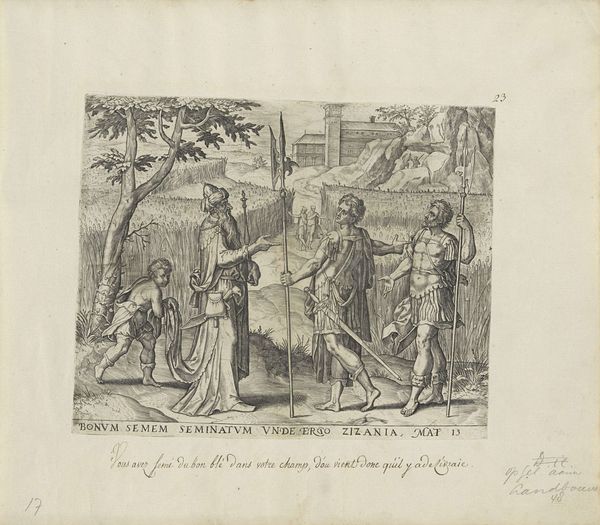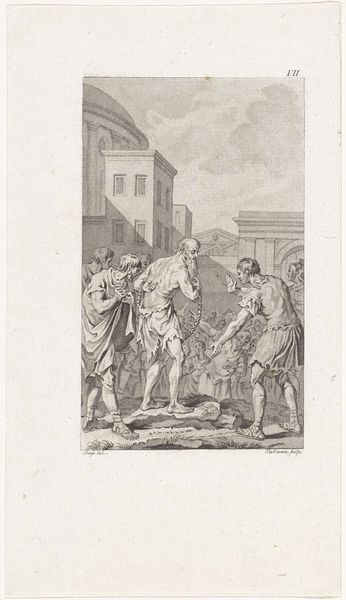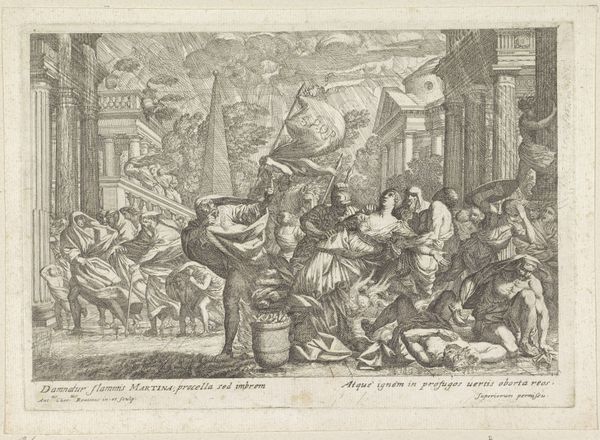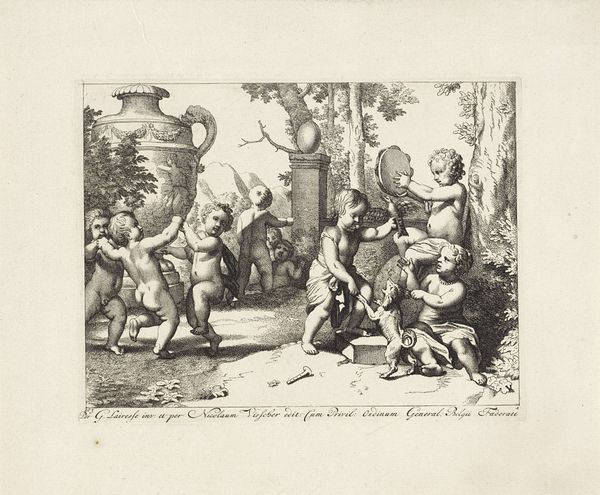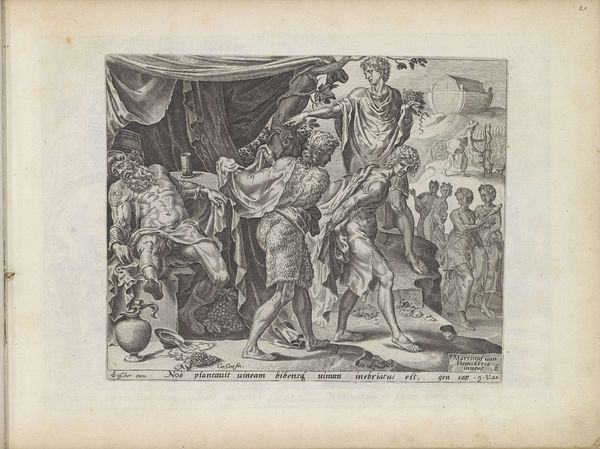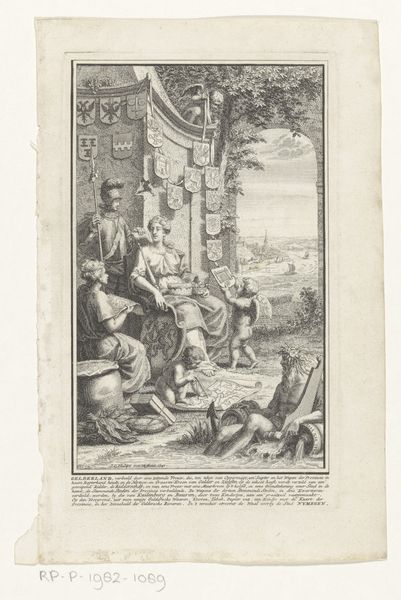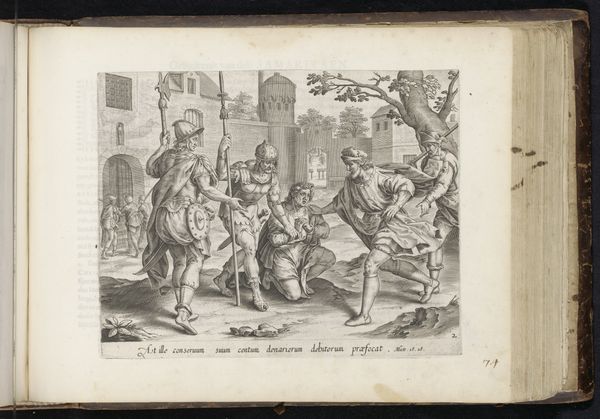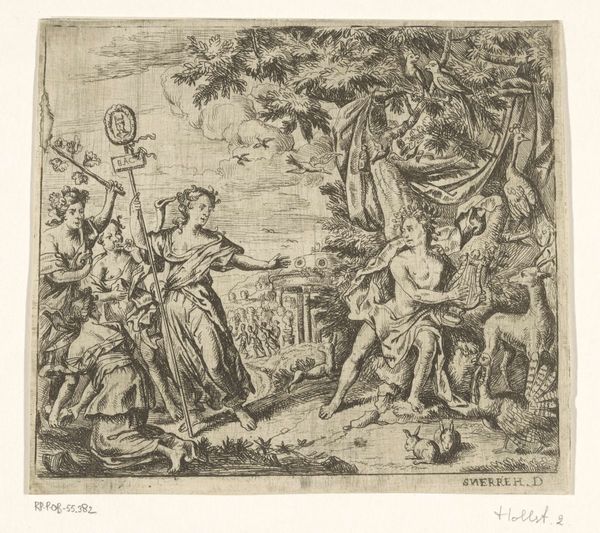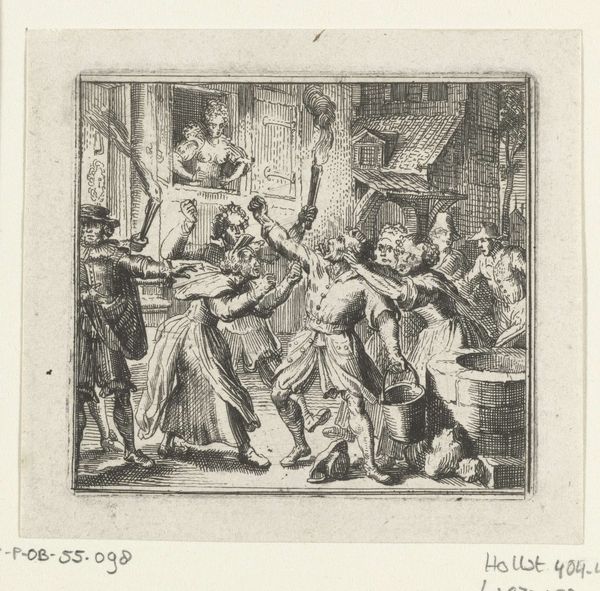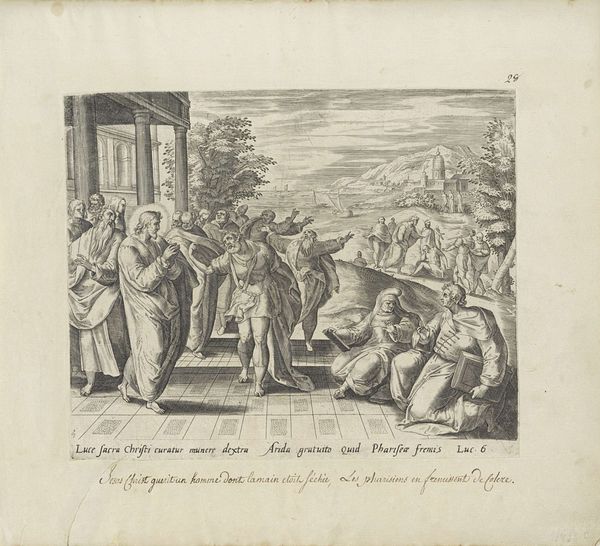
print, etching
# print
#
etching
#
mannerism
#
figuration
#
history-painting
Dimensions: height 197 mm, width 248 mm
Copyright: Rijks Museum: Open Domain
Curator: This print, residing here at the Rijksmuseum, captures a rather brutal scene titled “De onbarmhartige dienaar laat zijn schuldenaar gevangen zetten," or "The merciless servant imprisons his debtor.” It dates back to 1585 and is made using etching. What are your initial thoughts? Editor: Stark and filled with tension. The harsh contrast of light and shadow, achieved through the etching process, certainly heightens the drama of the composition. Curator: Indeed. Focusing on the printmaking, think about the labour and skill needed to etch that level of detail into a metal plate, which subsequently yields multiple prints for circulation. It shifts our view of the image to the studio of the printmaker, considering production methods and distribution. Editor: Agreed, and the figure at the heart of the action commands our attention; the line work creates this swirling movement of fabric that’s undeniably striking, and brings a real energy to what could have otherwise been static figuration. Curator: The material of the etching, the lines themselves, facilitate the conveyance of this scene to a wide audience, thereby giving insight to the distribution of moralizing tales within this timeframe, and how the process affected the production of the image and subsequently our ability to interact with its themes. Editor: A fair point; I think that thematically, this parable speaks profoundly to questions of forgiveness. Visually, the central figure’s expression is very well-rendered given the difficulty inherent to the medium of etching. Curator: Reflecting upon materiality highlights how this piece, beyond being an object of aesthetic and symbolic import, connects to economic and social practices of its period. The act of making it has a value, so it encourages us to think about those processes and decisions. Editor: Precisely, considering it as a work of visual communication—a carefully constructed, material object with its own internal logic and grammar—certainly gives us much to contemplate regarding the choices behind how that message comes across.
Comments
No comments
Be the first to comment and join the conversation on the ultimate creative platform.
